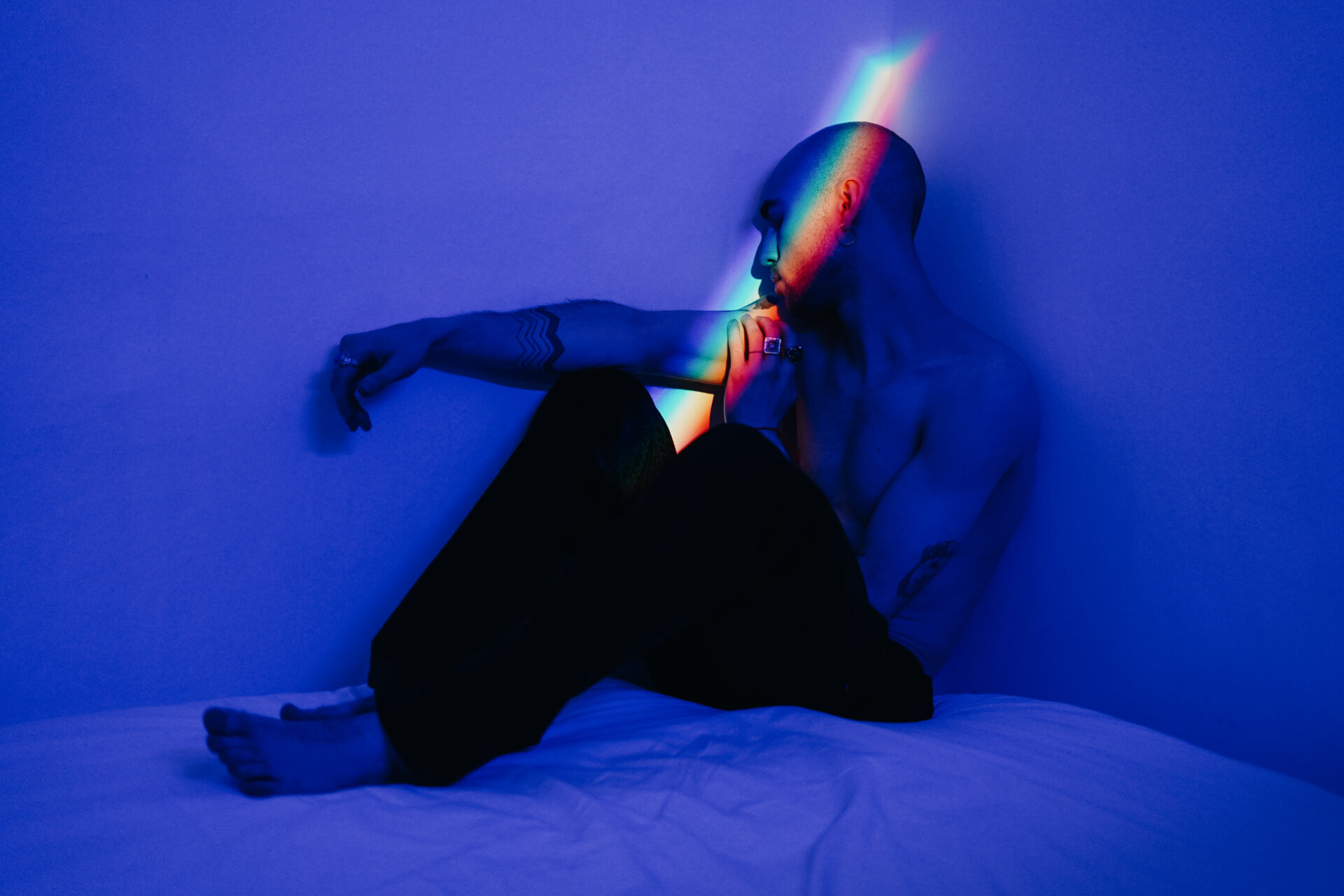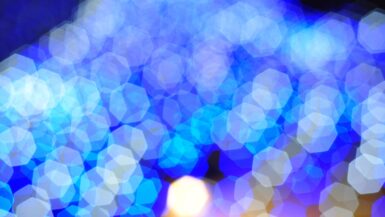In today’s fast-paced, technology-driven world, our exposure to artificial light, particularly blue light, has significantly increased. With the prevalence of electronic devices in our daily lives, it is crucial to understand the impact of blue light on our sleep patterns, overall productivity, and mental health. In this in-depth article, we will delve into the role of blue light in Seasonal Affective Disorder (SAD), a type of depression that is triggered by changes in natural sunlight exposure. Through a comprehensive analysis of scientific research, we will explore the physiological effects of blue light on our circadian rhythm, the connection between SAD and blue light exposure, and potential strategies to mitigate the negative effects of artificial blue light on our well-being. Join us as we unravel the complex relationship between blue light and Seasonal Affective Disorder, shedding new light on this critical topic for the modern age.
The Connection between Blue Light and Productivity
As we delve deeper into the relationship between blue light and Seasonal Affective Disorder, it is essential to also explore the impact of blue light on our productivity levels. In this section, we will examine the complex connections between blue light exposure, cognitive performance, and overall efficiency in our daily lives. By understanding these links, we can better manage our exposure to blue light and take steps to improve our well-being.
Blue Light and Cognitive Performance
Numerous studies have shown that exposure to blue light can significantly impact our cognitive performance. Specifically, blue light has been found to stimulate alertness, increase reaction times, and enhance memory and learning capabilities. This can be particularly beneficial during daytime work hours, when increased cognitive performance is desired. However, excessive exposure to blue light in the evening can have the opposite effect, leading to sleep disruptions and a decrease in productivity the following day.
To better understand the connection between blue light and productivity, it is crucial to examine the link between blue light and sleep: the importance of early intervention. By addressing sleep disruptions caused by blue light exposure early on, we can maintain optimal cognitive performance and productivity levels.
Striking a Balance between Blue Light Exposure and Productivity
Given the potential benefits and drawbacks of blue light exposure, it is essential to find a balance to maintain productivity levels without compromising sleep quality. One effective strategy is to manage our exposure to blue light throughout the day. This could involve increasing exposure to natural sunlight in the morning and reducing exposure to artificial blue light in the evening. Additionally, implementing screen filters on electronic devices and using blue light blocking glasses can help to minimize the negative effects of blue light on sleep and productivity.
Final Thoughts: Blue Light, Productivity, and Seasonal Affective Disorder
The connection between blue light and productivity is complex, with both positive and negative implications for cognitive performance and overall efficiency. By understanding this relationship, we can take steps to optimize our exposure to blue light, improve our sleep quality, and maintain productivity levels. Furthermore, managing blue light exposure may also play a role in alleviating symptoms of Seasonal Affective Disorder, as sleep disruptions and reduced productivity are common features of this condition. As we continue to navigate the modern, technology-driven world, finding a balance in our exposure to blue light is essential for our well-being and overall mental health.
Understanding Blue Light and Its Sources
Before delving into the details of how blue light affects Seasonal Affective Disorder, it is crucial to comprehend what blue light is and where it comes from. In this section, we will explore the properties of blue light, its natural and artificial sources, and how our exposure to blue light has changed over time. With a clear understanding of these factors, we can better appreciate the role of blue light in Seasonal Affective Disorder and develop strategies to manage our exposure.
The Science Behind Blue Light
Blue light is a part of the visible light spectrum, with a wavelength of approximately 380 to 500 nanometers. It has a higher energy than other colors in the spectrum, giving it unique properties that can affect our bodies and minds. Blue light is essential for regulating our circadian rhythm, the internal clock that synchronizes our sleep-wake cycle with the 24-hour day. Exposure to blue light during daylight hours helps to maintain alertness, cognitive function, and overall well-being.
Natural vs. Artificial Sources of Blue Light
The primary source of blue light is sunlight, which contains a mix of all colors in the visible light spectrum, including blue light. This natural exposure to blue light during the day is crucial for maintaining our circadian rhythm and promoting overall health. However, with the advent of modern technology, we are increasingly exposed to artificial sources of blue light, such as LED lights, smartphones, tablets, computers, and televisions. These electronic devices emit a significant amount of blue light, leading to increased exposure to this high-energy light during the day and into the evening hours.
The Evolution of Blue Light Exposure in Modern Society
Over the past few decades, our exposure to blue light has changed dramatically due to the widespread adoption of technology and the shift in our lifestyles. We now spend more time indoors, often in front of screens, which exposes us to artificial blue light throughout the day. Moreover, many people rely on electronic devices for entertainment, communication, and work late into the evening, thus disrupting the natural balance of blue light exposure that is essential for maintaining our circadian rhythm. This chronic exposure to artificial blue light can have a significant impact on our sleep patterns, mental health, and overall well-being, including the development or exacerbation of Seasonal Affective Disorder.
Recognizing the Impact of Blue Light on Seasonal Affective Disorder
Now that we understand the sources and properties of blue light, we can appreciate its role in Seasonal Affective Disorder. The disruption of the circadian rhythm caused by prolonged exposure to artificial blue light can contribute to the onset or worsening of this condition. As we continue to explore the complex relationship between blue light and Seasonal Affective Disorder, it is vital to consider the potential benefits and risks of our modern, technology-driven lifestyles. By being mindful of our exposure to blue light and taking steps to mitigate its impact, we can foster a healthier balance that benefits both our mental health and overall well-being.
Seasonal Affective Disorder Symptoms and Causes
Seasonal Affective Disorder (SAD) is a type of depression that occurs at specific times of the year, typically during the fall and winter months when daylight hours are shorter. The role of blue light in this condition is still being explored, but it is believed to play a significant part in the onset and severity of SAD. In this section, we will delve into the common symptoms of Seasonal Affective Disorder and explore the potential causes behind this condition, with a focus on how blue light exposure may contribute to its development.
Recognizing the Symptoms of Seasonal Affective Disorder
The signs and symptoms of Seasonal Affective Disorder can vary among individuals but generally include a combination of the following:
- Depressed mood, feelings of hopelessness, or sadness
- Loss of interest in activities once enjoyed
- Changes in appetite, often leading to weight gain
- Difficulty concentrating and reduced productivity
- Increased need for sleep and excessive fatigue
- Feeling sluggish or agitated
- Social withdrawal or isolation
These symptoms typically begin in the fall and worsen throughout the winter months, improving as the days grow longer and sunnier in the spring and summer.
Exploring the Causes of Seasonal Affective Disorder
While the exact cause of SAD is not fully understood, it is believed to be related to a combination of genetic, environmental, and biological factors. Some of the primary factors contributing to the development of SAD include:
- Disruption of the circadian rhythm due to reduced sunlight exposure during the fall and winter months
- Imbalances in serotonin, a neurotransmitter that influences mood
- Alterations in melatonin levels, a hormone that regulates sleep and mood
Examining the Role of Blue Light in Seasonal Affective Disorder
Blue light exposure is a crucial component in regulating our circadian rhythm, and a disruption in this natural balance can contribute to the onset of SAD. Reduced exposure to natural sunlight during the winter months can lead to a disruption in the sleep-wake cycle, resulting in mood disturbances and other symptoms associated with Seasonal Affective Disorder.
Moreover, excessive exposure to artificial blue light from electronic devices can further exacerbate this disruption, potentially increasing the severity of SAD symptoms. As our society becomes more reliant on technology, it is essential to consider the impact of blue light exposure on our overall mental health and well-being.
Addressing the Impact of Blue Light on Seasonal Affective Disorder
Understanding the role of blue light in Seasonal Affective Disorder provides valuable insight into potential strategies for managing and alleviating its symptoms. Some effective approaches to counteract the effects of blue light and promote mental health during the fall and winter months include:
- Increasing exposure to natural sunlight during the day
- Using light therapy, which involves exposure to a specialized lightbox that mimics natural sunlight
- Limiting the use of electronic devices in the evening and incorporating screen filters or blue light blocking glasses
- Maintaining a consistent sleep schedule and practicing good sleep hygiene
As we continue to explore the complex relationship between blue light and Seasonal Affective Disorder, it is essential to be proactive in managing our exposure to both natural and artificial sources of blue light. By doing so, we can promote a healthier balance that benefits our mental health, sleep patterns, and overall well-being.
Strategies to Reduce Blue Light Impact on Wellbeing
In an era where technology is omnipresent, it is essential to develop effective strategies to reduce the impact of blue light on our wellbeing, particularly in the context of Seasonal Affective Disorder (SAD). In this section, we will explore various approaches to help minimize the adverse effects of blue light exposure on our mental health, sleep quality, and overall wellbeing.
Embrace Natural Light During Daytime
One of the simplest and most effective ways to counteract the potential negative impact of blue light on our wellbeing is to increase our exposure to natural sunlight during the day. By spending time outdoors, especially in the morning, we can help regulate our circadian rhythm and improve our mood. Additionally, opening curtains and blinds to let in natural light can brighten our living and working spaces, contributing to a more positive atmosphere.
Establish a Digital Curfew
Setting a digital curfew, or a designated time in the evening to disconnect from electronic devices, can be a powerful tool in minimizing the impact of artificial blue light on our sleep and mental health. By avoiding screens at least an hour before bedtime, we give our bodies the opportunity to naturally wind down, preparing for a restful night’s sleep and reducing the risk of exacerbating SAD symptoms.
Invest in Blue Light Blocking Tools
There are various tools available to help reduce our exposure to blue light from electronic devices. Blue light blocking glasses can be worn while using screens to filter out a significant portion of blue light emissions, helping to protect our eyes and maintain our circadian rhythm. Additionally, screen filters or software applications can be installed on devices to adjust the color temperature and reduce blue light emissions, making them less disruptive to our sleep patterns and overall wellbeing.
Practice Good Sleep Hygiene
Maintaining a consistent sleep schedule and practicing good sleep hygiene can greatly improve our ability to cope with Seasonal Affective Disorder and reduce the impact of blue light. Some key sleep hygiene practices include:
- Creating a comfortable and relaxing sleep environment
- Avoiding caffeine and alcohol close to bedtime
- Engaging in relaxing activities, such as reading or meditation, before sleep
- Keeping the bedroom dark and cool
By prioritizing sleep hygiene, we can create an environment that supports restful sleep and promotes overall mental health and wellbeing.
Consider Light Therapy for Seasonal Affective Disorder
Light therapy, also known as phototherapy or bright light therapy, can be an effective treatment option for individuals experiencing Seasonal Affective Disorder. This approach involves exposure to a specialized lightbox that mimics natural sunlight, providing the necessary blue light exposure without the harmful effects of artificial sources. Light therapy can help regulate the sleep-wake cycle, improve mood, and alleviate symptoms of SAD.
As we navigate through the digital age, it is crucial to recognize the potential impact of blue light exposure on our wellbeing, especially in the context of Seasonal Affective Disorder. By implementing these strategies, we can effectively manage our exposure to blue light and promote a healthier balance that supports our mental health, sleep quality, and overall wellbeing.
Blue Light Exposure and Sleep Disruption
As we delve deeper into the role of blue light in Seasonal Affective Disorder, it is essential to understand the connection between blue light exposure and sleep disruption. In this section, we will explore the physiological effects of blue light on our sleep patterns and examine how these disruptions can contribute to the development or exacerbation of Seasonal Affective Disorder.
The Influence of Blue Light on Our Circadian Rhythm
Our circadian rhythm, or internal body clock, plays a crucial role in regulating our sleep-wake cycle. Blue light exposure, particularly from natural sunlight, is vital for maintaining this rhythm and promoting alertness during the day. However, exposure to artificial blue light from electronic devices in the evening can disrupt our circadian rhythm, leading to sleep disturbances and potential consequences for our mental health.
Electronic Devices and Artificial Blue Light Exposure
In today’s digital age, our reliance on electronic devices has led to increased exposure to artificial blue light, particularly in the evening hours. This extended exposure can suppress the production of melatonin, the hormone responsible for regulating sleep, making it more challenging to fall asleep and stay asleep throughout the night. This disruption in sleep patterns can contribute to the onset or worsening of Seasonal Affective Disorder symptoms.
Understanding the Link Between Sleep Disruption and Seasonal Affective Disorder
Poor sleep quality and sleep disturbances are often associated with Seasonal Affective Disorder. The disruption of the circadian rhythm caused by excessive blue light exposure can lead to mood disturbances, difficulty concentrating, and increased fatigue – all common symptoms of SAD. By recognizing the connection between blue light exposure and sleep disruption, we can develop strategies to mitigate the impact on our mental health and overall well-being.
Managing Blue Light Exposure for Better Sleep and Mental Health
There are several approaches we can take to minimize the impact of blue light exposure on our sleep patterns and mental health, particularly in the context of Seasonal Affective Disorder:
- Establish a consistent sleep schedule and practice good sleep hygiene
- Limit the use of electronic devices in the evening and create a digital curfew
- Invest in blue light blocking tools, such as screen filters or blue light blocking glasses
- Incorporate relaxing activities, such as reading or meditation, into the evening routine
By implementing these strategies, we can effectively manage our exposure to blue light, promote restful sleep, and support overall mental health and well-being. The connection between blue light exposure and sleep disruption is an important aspect to consider in the broader context of Seasonal Affective Disorder, and taking proactive steps to address this issue can make a significant difference in our everyday lives.





Leave a reply